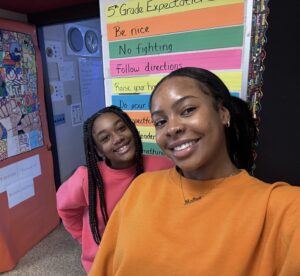When Gretchen Whitmer took office, 48.9 percent of residents held some type of college degree or credential, according to state data. Soon after taking office, Whitmer announced her Sixty by 30 plan – a goal for 60 percent of Michiganders to have a postsecondary degree or certificate by 2030.
On December 6, the Detroit Regional Chamber unveiled its fourth annual report on where the state and city stand on meeting this goal, and the impact on the business community’s ability to meet talent needs.
Results were presented by Sandy K. Baruah, President and Chief Executive Officer, Detroit Regional Chamber and Greg Handel, Vice President, Education and Talent, Detroit Regional Chamber.
Report Results and Takeaways:
- The report shows that currently, 53 percent of residents hold some type of college degree or credential.
- Experts tell us that 70% of jobs will require education or training beyond high school by 2027.
- Data shows that those without postsecondary credentials are 4x more likely to be unemployed.
- Postsecondary enrollment in Michigan continues to drop – 37% of students in the Detroit region and 59% in the city are not enrolled in postsecondary education.
- In addition to enrollment declines the other major red flag is Adult Degree completion is declining.
- Education has a perception crisis – in a survey conducted by the Chamber, 27.5% said a four-year degree was not worth the money.
In a unique “Reaction Roundtable,” Henry Ford College‘s Russ A. Kavalhuna and University of Michigan‘s Santa J. Ono shared how their reactions and on the report and their perspectives on the state of education enrollment.
Roundtable Takeaways:
- Ono: U of M has seen growth in terms of enrollment over the last five years and this is due to investment. I believe we can contribute to the city and the state by growing this way. We hope to harness this five-year growth and give this pathway to more students.
- Kavalhuna: The best news is there is a collective acceptance that this is a priority in the state. In Michigan, both sides of the aisle and both industry and philanthropy agree that we must increase the number of individuals achieving postsecondary education to be competitive with other states. We are trying to create a pipeline. We have to all be rowing in the same direction and that’s happening more and more each year.
- Ono: I am optimistic. I have not seen this kind of passion and alignment in other states. We are building the right pathways. From government to business leaders to the higher education ecosystem we see a recognition that this has to be a focus.
- Kavalhuna: Regarding the perception that postsecondary education is not worth the money, we must do more to show a value proposition for students and we must decrease the hurdles to get into schools. The state of Michigan and the Federal Government have done a lot to reduce the cost barrier. We have to get more students enrolled and show the value proposition at the end of their schooling.
- Kavalhuna: We have to do a better job of helping students see themselves as college material. We need to get outside of the campus and get in front of prospective students.
- Ono: It’s alarming that the perception is that postsecondary education is not worth it when the data shows that this education translates to four times the chance of being employed. We don’t do a good enough job of telling that story. We also do a poor job as a sector of articulating where the jobs are and counseling students on internships and co-op opportunities.
- Kavalhuna: We need to go to businesses and industries by sector and have them tell us the skills they need employees to have. We will partner with them and build the curriculum to educate students if they will in turn offer job opportunities. In this way, we can start to drive individuals from out of state to our colleges and universities. That is the plan for the next three to five years.
As always, be sure to subscribe to our newsletter for regular updates on all things Detroit.






















